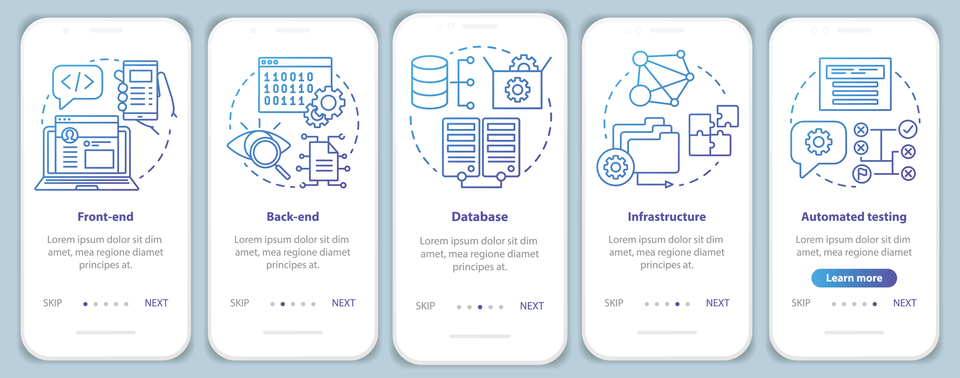White-Box Testing – tests internal structures or workings of an application giving an internal perspective of the system. Human Factors Feasibility – determines whether the system is relevant and can be managed by the end user. Technical Feasibility – confirms the system will perform and verifies there are no production barriers. By making access to scientific knowledge simple and affordable, self-development becomes attainable for everyone, including you! These shortcomings were probably already present, so a good way to find out about them is interviewing support staff.
We have years of experience developing projects across all industries, including healthcare, finance, government, and education. Our team at globe alley will provide you with the best software development services. The SDLC model is the most common approach to software project management. It divides the different stages of a project into distinct steps to allow managers to monitor and control every development aspect. Now both system analysts and end-users should be able to see the realization of the project that implements the changes.
Benefits and drawbacks of SDLC
The analysis stage includes gathering all the specific details required for a new system as well as determining the first ideas for prototypes. The final phase of the System Development Life Cycle, this is the phase where end users can fine-tune the system. In addition to this, new features can also be added to the system to meet the additional user requirements if necessary. Once a system has been stabilized through testing, SDLC ensures that proper training is prepared and performed before transitioning the system to support staff and end users. Training usually covers operational training for support staff as well as end-user training.

System Design is a critical stage in the SDLC, where the requirements gathered during the Analysis phase are translated into a detailed technical plan. It involves designing the system’s architecture, database structure, and user interface, and defining system components. The Design stage lays the foundation for the subsequent phases of system development development and implementation phases. A system development life cycle is a conceptual model that delineates the stages involved in developing and implementing a system. Each stage is important in the development process and differs from the others in terms of complexity, assets required, and intended functionalities.
SDLC: 7 Phases or Stages of the System Development Life Cycle, Models, Perks & More
Economic Feasibility – determines the positive economic benefits that the system will provide (cost benefit analysis). Toolshero supports people worldwide (10+ million visitors from 100+ countries) to empower themselves through an easily accessible and high-quality learning platform for personal and professional development. A system is, at the very least, a component, and possibly a combination of various components of information technology. With web application security add an extra layer of protection to your application and stop DDoS attacks and data breaches before they even occur. SDLCs can also be more specifically used by systems analysts as they develop and later implement a new information system. Thus, systems analysts should have an even mix of interpersonal, technical, management, and analytical skills altogether.
It entails iterative development, constant improvement, and adaptability in the face of change. The verification and validation model https://www.globalcloudteam.com/ tends to be resource-intensive and inflexible. For projects with clear requirements where testing is important, it can be useful.
How to become a software developer
Today’s increasing demand for data and information security also factor into the overall planning, training, testing, and deployment of a system. In this stage, the problem or pain the software targets is clearly defined. First, developers and other team members outline objectives for the system and draw a rough plan of how the system will work. Then, they may make use of predictive analysis and AI simulation tools at this stage to test the early-stage validity of an idea.

Before looking to launch a new system, it is important to first understand what is needed to develop the system successfully. The business systems analyst should have a good idea of what the company requires from a particular system while considering what the client needs from the company. The point of a good system is to marry the two needs at the most efficient and cost-effective manner. In the requirement analysis phase, the analyst should draw up a list of everything needed from the company to develop the best system, all the while bearing in mind what resources are actually available. In business, any systems which are implemented into the operations must go through several processes before they are fully integrated into the company infrastructure. The maintenance phase ensure that the system is functional, improving the software/hardware, and updating the system.
Systems Analysis and Requirements
Besides SDLC, there is another concept that is a cornerstone for the entire lifecycle of product and system planning. Systems Analysis & Design (SAD) is a process during which specific information systems are developed that effectively support hardware, software, or people. If this is done in the production environment, this is usually done by a Quality Assurance professional. He or she will determine if the proposed design meets the company’s goals. The testing must be repeated, if necessary, until the risk of errors and bugs has reached an acceptable level.
Before choosing a language, you need to know what you want to code, but simple front-end development languages like JavaScript, HTML, and CSS are good places to start. The Smartsheet platform makes it easy to plan, capture, manage, and report on work from anywhere, helping your team be more effective and get more done. Report on key metrics and get real-time visibility into work as it happens with roll-up reports, dashboards, and automated workflows built to keep your team connected and informed. Again, because SDLCs rely heavily on documentation and guidelines, it’s a team effort, and losing even a key person won’t put the project’s deadline in jeopardy. SDLC models can thus assist projects in iterating and improving themselves until they are essentially ideal. This method results in several release cycles, during which each iteration is tested, bugs are resolved, and input from stakeholders is gathered.
Stage 6: Implement and launch the product.
If a problem is identified during any phase of the systems development life cycle, the developer may have to proceed through the life cycle phases once more. All phases of the systems development life cycle need to occur for the success of the app and satisfaction of its users. The new seven phases of SDLC include planning, analysis, design, development, testing, implementation, and maintenance. New versions of a software project are produced at the end of each phase to catch potential errors and allow developers to constantly improve the end product by the time it is ready for market. It’s linear and straightforward and requires development teams to finish one phase of the project completely before moving on to the next. This includes all the specifications for software, hardware, and network requirements for the system they plan to build.
- Aligning the development team and the security team is a best practice that ensures security measures are built into the various phases of the system development life cycle.
- In theory, all of the prior planning and outlined should make the actual development phase relatively straightforward.
- It does not allow for a project to be broken down into smaller tasks or have specific people or departments taking on separate responsibilities.
- In that case, there should have a monthly or yearly maintenance contract between software company and client (software user).
- In this phase, the system must be installed and configured correctly, and end users must be able to use it effectively.
- They’ll typically turn the SRS document they created into a more logical structure that can later be implemented in a programming language.
Unit Testing – takes individual units of software source code and tests them to determine whether they are fit for use. Requirements Gathering – provides alternative means to illustrate, explain, and specify exactly what must be delivered to meet business goals. This process is repeated again and again, with each iteration yielding a new version of, for instance, the software.
SDLC Phase 5: Integration and Testing
This phase produces a High-Level Document and a Low-Level Document, which are used as inputs in the next phase of 7 stages of the system development life cycle. This phase lays out what will happen during the project’s life cycle and decides whether or not it will succeed. At this point, the team structure, time frame, budget, security, and other critical issues should all be considered. This post offers a thorough examination of the system development life cycle.

